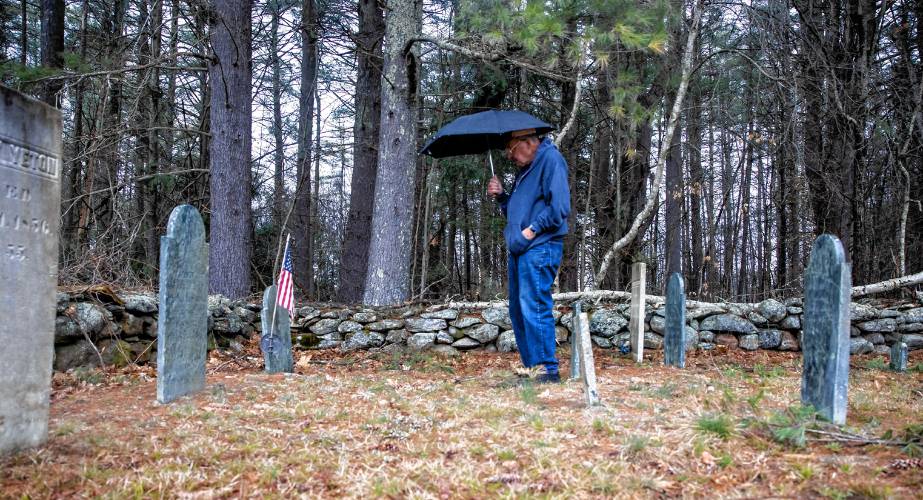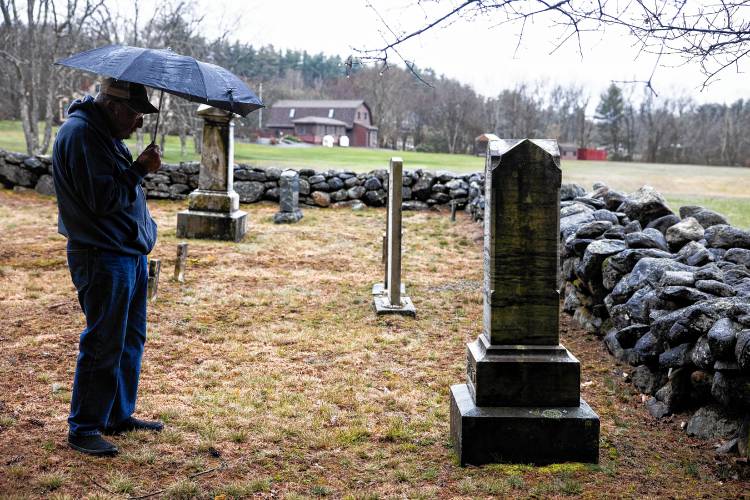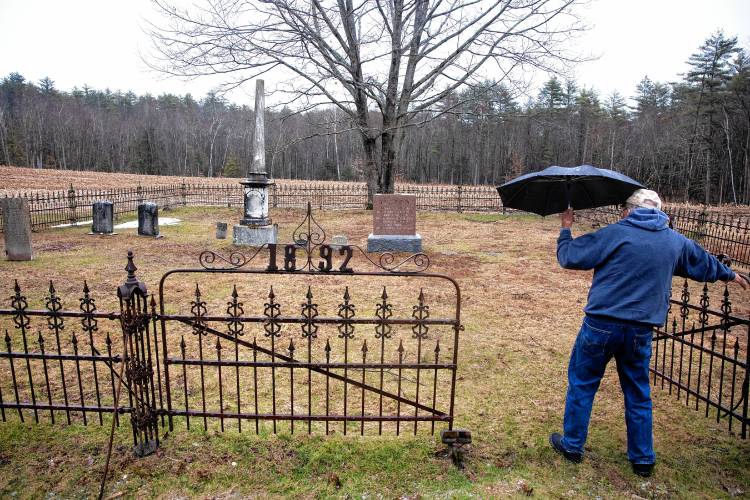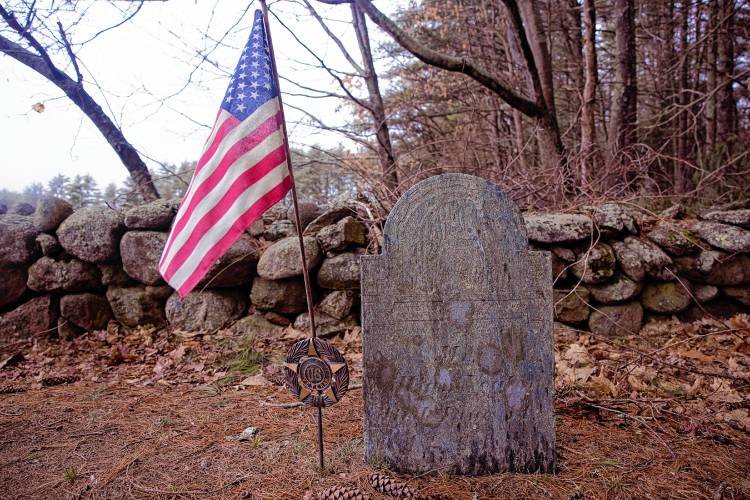What’s in a name? Ask an Epsom Yeaton.
|
Published: 04-19-2024 2:01 PM
Modified: 04-24-2024 11:46 AM |
Norm Yeaton dropped a stack of papers three inches thick, attached by a clip, onto his living room table.
The thud said a lot, that an arduous research project by Yeaton – in an attempt to understand the sheer volume of people in Epsom whose last name was the same as his – had required painstaking attention to detail and a powerful passion to learn the unique family circumstances in town.
“George Yeaton, he had like seven kids and that is an awful lot of Yeatons,” said Norm, who is 88 and looks 20 years younger. “And then someone will ask me, ‘Do you know Mickey?’ and I’m thinking, ‘Who the hell is Mickey?’ Then it dawns on me that this person is in his 20s, but his father’s father, I might have known him, but when you get into the great-grandchildren down the line, I don’t know them and they may live right here in town.”
That’s the pattern that many Yeatons who live in the Suncook Valley follow, no choice of theirs. Pembroke Select Board Chair Karen Yeaton said that once her name surfaces, basically at any location that has multiple people nearby, the game begins.
“We are everywhere I go,” Karen Yeaton said. “If I say my last name, someone will approach and ask, ‘Are you related to Mary? Are you related to Betsy,’ and I say, ‘Probably.’”
None of the five Yeatons interviewed showed any trace of exhaustion when asked for a reaction to this name game – something they are asked over and over.
Yes, they rolled their eyes, but then came a laugh and then stories about the rich, humorous tradition that the Yeaton name carries.
Karen and Norman don’t know each other, but both would bet that they are related. Meanwhile, Karen’s husband, Mark Yeaton, a former star on the Pembroke Academy basketball team, said that while lots of Yeatons, unknown to each other, chat and laugh at the grocery store, they wonder if the other Yeaton is, indeed, a relative.
Article continues after...
Yesterday's Most Read Articles
 To provide temporary shelter, Concord foots the bill for hotel stays for people experiencing homelessness
To provide temporary shelter, Concord foots the bill for hotel stays for people experiencing homelessness
 The Appalachian Trail in New Hampshire just got easier, as another debate looms over replacing structures in wilderness areas
The Appalachian Trail in New Hampshire just got easier, as another debate looms over replacing structures in wilderness areas
 State Police recover body from Merrimack River in Hooksett
State Police recover body from Merrimack River in Hooksett
 Ramp from I-93 to I-89 to be closed for repairs Tuesday
Ramp from I-93 to I-89 to be closed for repairs Tuesday
 Authorities believe mother shot three year-year-old son in Pembroke murder-suicide
Authorities believe mother shot three year-year-old son in Pembroke murder-suicide
 Granite Geek: There’s a very big battery in Moultonborough. We need a lot more of them
Granite Geek: There’s a very big battery in Moultonborough. We need a lot more of them
Once, Mark chose to do his homework after a Yeaton encounter.
“I find people who are related to me all the time,” Mark said, “Someone asked, ‘Are you an Epsom Yeaton?’ and it turned out she was my second cousin.”
By now, nearly 300 years after the Yeatons first appeared in Epsom, family members have come and gone, but the history never leaves.
The Black Hall Road Cemetery in Epsom is the final resting place of multiple Yeatons who came before. Its gravestones are bordered by a rock wall and an old, rusty gate. Some of the monuments are in remarkably good condition.
James C. Yeaton’s marker stands tall, at least five feet high, on a beige monument with a charcoal-like background and words that are clear as day. He died in 1884, at the age of 56. His wife, Hannah, is there as well. She died in 1906.
John Yeaton’s marker is about the same height and has unsightly water streaks running across its otherwise attractive off-white base. The letters are quite readable, however. John died in 1881 at 76.
A stone only 18 inches tall marked the death of another family member, who died in 1856 at 55. “Hopley Yeton” reads the top of the gravestone.
“Everyone notices the misspelling,” Norman, the tour guide, said.
The name on a stone faded and gray, the shortest tombstone in the cemetery, had illegible letters and stood alone like the individual who might have lived in the 18th century.
Online records show the Yeatons were on the ground floor when Epsom was chartered in 1727, and they held key positions in the community through the centuries.
They were town clerks, town administrators, business owners and selectmen. John Yeaton was one of the first selectmen in 1740 and an early proprietor. William Yeaton Jr. opened a tavern in 1827, William Yeaton fought with the Seventh Regiment during the Civil War, and Carrie Yeaton joined the relief corps in 1884.
The surname, like for so many residents, meant something to Gary Matteson, Epsom’s town moderator for 12 years. He called Bob Yeaton, who owned Yeaton Farm on Route 28, a mentor and said he introduced him to politics. He’d stop by Bob’s barn now and then to chat.
“He would grumble to me that they weren’t milking his cows fast enough,” Matteson said. “We would talk about the planning board to help me not screw up.”
Bob’s son, Stewart Yeaton, is the Epsom fire chief. He said generations of Yeatons have scattered about, making it harder these days to know them all and, in fact, most of them.
Moving along, Matteson bought his farm from a gentleman named Ted Yeaton.
“Look at my deed,” Matteson said. “Every other abutter is a Yeaton.”
Many Yeatons were farmers. Prior to World War II, six Yeatons had farms in Epsom that produced milk that was shipped by railroad. Their biggest farm was named, stunningly, the Yeaton Farm, which had milking cows off of Route 28.
Norm bought his farm, once belonging to his parents, nearly 40 years ago and has 16 acres of cornfields that are tended to by hired help. He spent 28 years in the Air Force and Air National Guard. He also taught industrial arts at two high schools.
He lives a quiet life, with birds fluttering at his feeder on a deck that overlooks the barren cornfield. Ironically, that quiet life is being lived in the midst of dozens of relatives whose name is everywhere. The phone book, the gravestones, the documents from 350 years ago.
As Karen said, “There’s just tons of us; we’re like ants. We’re everywhere.”
And that includes in Norm’s living room, where the researched papers, created by his wife, Marietta Cahill-Yeaton, continue to shed light on the Yeaton hub in Epsom.
He placed three other sheets of paper near the encyclopedia-sized pamphlet, onto the table. One had nine columns of Yeatons, dating back to the 17th century, with mostly patriarchs through the different generations on top of the list, his/her children below. It had arrows everywhere, making the list look like a war map that would have baffled U.S. Army General George Patton, who fought in World War II.
He’s got a graphic with 42 squares that resembles a Super Bowl betting sheet. Each box has numbers and letters in it, and Norman explains what they mean below the boxes.
For example, 2C1R refers to a second cousin once removed.
Asked how he and Stewart Yeaton were related, Norm moved to the table, to the sheet that showed nine columns of names and arrows pointing everywhere.
“Oh, boy,” said Norm, preparing for a challenge he’d never avoid. He began pointing.
“There’s my father,” Norm said, “and his father was this guy here, Frederick. Frederick’s brother was James. So Frederick was my great-great-grandfather. And Stu’s great-great- grandfather was that guy right there.”
Translation:
“That makes us, what,” Norm asked. “Second cousin? Third cousin? Let me look at this again.”























 ‘I hate to leave’: Three-alarm fire in Loudon burns centuries-old home to the ground
‘I hate to leave’: Three-alarm fire in Loudon burns centuries-old home to the ground Photos: Signs of spring
Photos: Signs of spring 25-year-old Concord man identified as Steeplegate Mall RV fire victim
25-year-old Concord man identified as Steeplegate Mall RV fire victim
